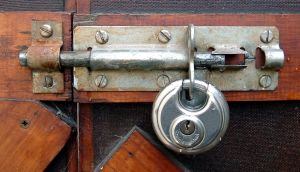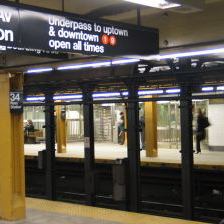 The terrorist attacks of September 11, 2001, shook America to its core and revealed just how vulnerable our nation’s transit system was to penetration by those with nefarious intentions.
The terrorist attacks of September 11, 2001, shook America to its core and revealed just how vulnerable our nation’s transit system was to penetration by those with nefarious intentions.
In the eight years since then, city, state and federal governments have spent billions of dollars implementing security measures that have infinitely complicated travel, but which critics claim have often been ineffective or wasteful.
So has travel been made safer, or have these billions been wasted?
Not surprisingly, the bulk of the efforts have focused on aviation security.
Airline industry analysts say that the government has spent about $45 billion since 9/11, most of which has gone to hire TSA staff, install expensive new screening equipment, and create and monitor terrorist “watch lists.”
The result is that travelers must wait in endless lines at airports before removing their shoes, laptops, liquids and powders, and even undergoing body scans. New procedures require passengers to give their name, gender and birthdate when booking a ticket, and foreigners coming in to the U.S. must be pre-cleared via the Electronic System for Travel Authorization program.
Check out Peter’s take on Post-9/11 Air Travel Safety & Security.
Subway systems have been retro-fitted with high-tech surveillance systems, and border patrol has stepped up documentation requirements for Americans returning to the U.S. by land or sea.
 But are all these extra measures really helping to safeguard us, or is it merely giving us a false sense of security? And is the money being well-spent, or is it being squandered on “white elephant” projects instead of ones that are potentially more effective?
But are all these extra measures really helping to safeguard us, or is it merely giving us a false sense of security? And is the money being well-spent, or is it being squandered on “white elephant” projects instead of ones that are potentially more effective?
Patrick Smith, author of the “Ask the Pilot” column on Salon.com, doesn’t think highly of airport screening. In fact, he calls it “security theater” and claims that the nation is still suffering from a “9/11 hangover.”
Smith thinks the TSA is wasting time and money confiscating benign liquids and small metallic objects such as nail clippers and razors which pose very little risk, particularly since cockpit doors are now impenetrable from the outside.
He thinks that more emphasis should be placed on screening airport employees and contractors, who often have unfettered access to planes and are not scrutinized nearly as carefully as passengers.
More on Travel Safety & Security:
- TSA Boosts Screenings for Powders; Liquid Ban Lingers
- Additional TSA Security Measures: Progressive or Oppressive?
- Greenberg-Tested, TSA-Approved Toiletries
- Will “Improved” TSA Watch List Make Us Safer?
- Travel-Testing TSA-Friendly Laptop Computer Bags
Air cargo is another area where screening is lax. Despite the fact that the 9/11 Commission recommended that air cargo be screened as vigorously as passenger baggage, eight years later measures to do so are still not fully in place.
 Congressman Ed Markey (D-MA) waged a four-year battle to pass a 2007 bill requiring air cargo to be screened, but the TSA has until August 2010 to achieve 100 percent compliance. An 18-month survey by the Government Accountability Office showed that the TSA had taken some actions, but there were concerns over whether the agency had enough inspectors or adequate equipment to reach its goal.
Congressman Ed Markey (D-MA) waged a four-year battle to pass a 2007 bill requiring air cargo to be screened, but the TSA has until August 2010 to achieve 100 percent compliance. An 18-month survey by the Government Accountability Office showed that the TSA had taken some actions, but there were concerns over whether the agency had enough inspectors or adequate equipment to reach its goal.
The bill also included a provision that all cargo ship containers be screened before it arrived on U.S. soil. However that mandate had a phase-in process of five years, which means full implementation will not occur until 2012.
And while Washington, DC, Atlanta and other major cities have installed state-of-the art surveillance systems in their underground subway systems, the city most affected by the attacks of 9/11 still has not.
Though New York’s Metropolitan Transit Authority awarded a $200 million contract to Lockheed Martin four years ago to create a surveillance monitoring system for its subway, the technology still remains unimplemented. Furthermore, Lockheed and the MTA are embroiled in lawsuits against each other, with both sides claiming breach of contract.
Don’t miss our Off the Brochure Travel Guide to New York City. To find places to eat, try Three Days, Nine Meals: New York City.
In the meantime, the extensive subway system remains relatively vulnerable, particularly the tunnels that go beneath the rivers.
 Authorities say a bomb in the tunnel that goes under the East River could cause massive flooding and kill up to 19,000 people.
Authorities say a bomb in the tunnel that goes under the East River could cause massive flooding and kill up to 19,000 people.
Despite this and other failures, many officials are convinced that the nation is much safer than it was before 2001.
Rep. Peter DeFazio (D-Oregon) says that airport passenger screening has improved vastly since he first became a Congressman in 1986.
Back then, he says, security personnel would not have been able to spot a handgun concealed in a carry-on bag, which they can easily do now.
And Homeland Security Secretary Janet Napolitano feels that New York City’s subway system is safe overall. “I ride the subway, the mayor rides the subway, the vice mayor rides the subway,” Napolitano said.
By Karen Elowitt for PeterGreenberg.com.
Related links: NPR.org, ABC News
More on Travel Safety & Security:












